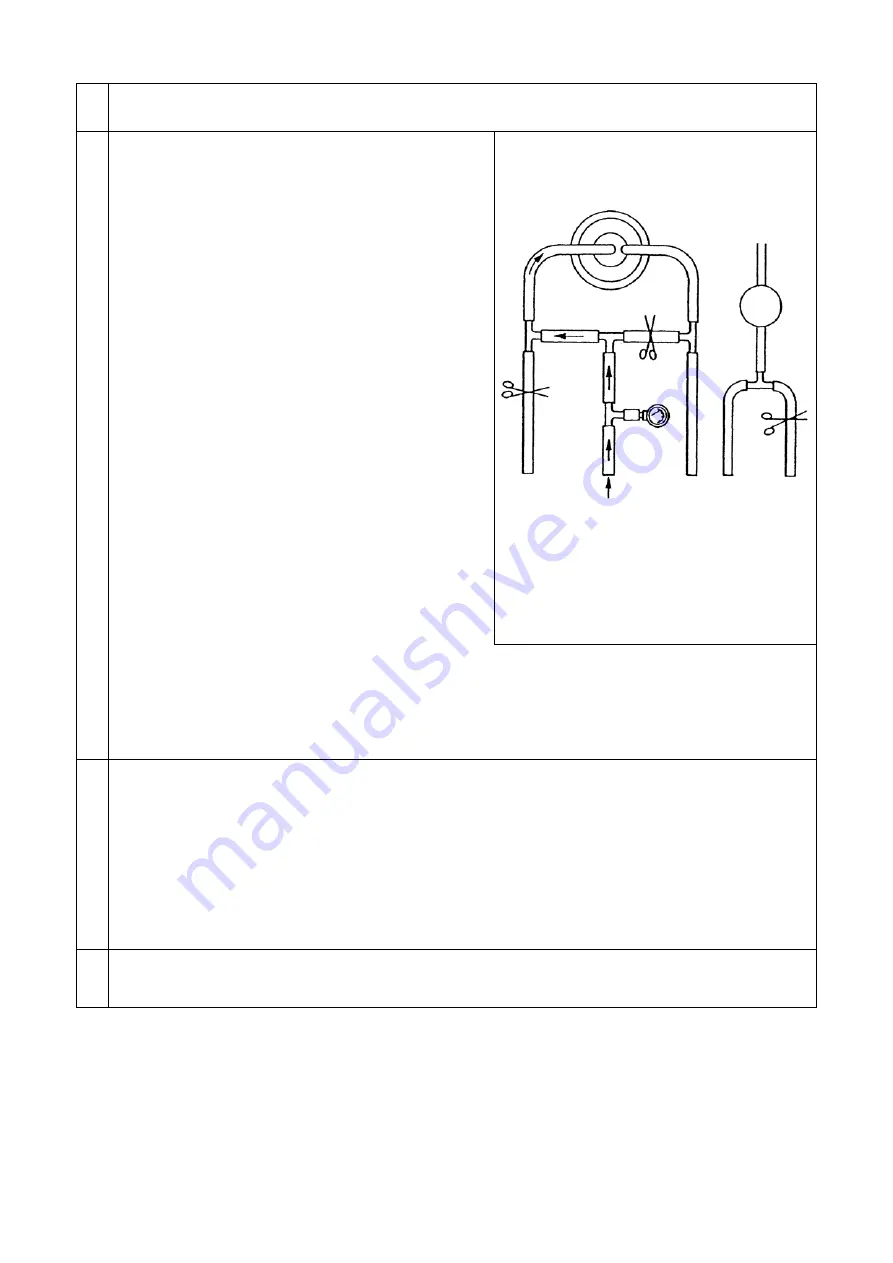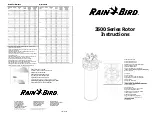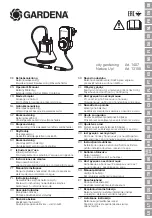
4
Accelerate the rotor to the specified high speed while supplying the overlay solution.
5
When the rotor reaches the specified speed,
inject the sample at the specified flow rate to start
separation.
The injection pressure of a water type sample is
approximately 0.8-1.2 kgf/cm
2
at a maximum flow
rate of 9 l/hr when the revolution speed is
maximum. The lower the flow rate and the lower
the revolution speed, the lower the injection
pressure.
{
Take care not to allow air into the central
connector to put in a sample. If air is
introduced and the flow has stopped, arrange
the clamps as shown in 4.2.3.(2), flow overlay
solution to eliminate air and then inject the
sample. If the inconvenience cannot be
eliminated by such measures, decelerate the
speed to 3,000 rpm, and carry out the above
steps to eliminate air.
Caution :
During high speed revolution, check the vacuum degree and, if it has dropped unusually or
an anomaly has occurred, stop operation immediately. Poor vacuum may be caused by:
{
It is better that no bubbles, etc. are mixed in the sample.
6
After the sample is injected, flow overlay solution again at 30 ml/min.
And spin until the sample has been precipitated.
Calculate the sedimentation time from the following formula using K factor from the
separation characteristic table on page 38.
Sedimentation time T (hr) = K/S
S: Sedimentation coefficient of sample
7
The recovery method of or separated particles differ from density gradient centrifugation to
pelleting. Description follows for them respectively.
(C)
Pump
Sample Overlay
solution
(C)
Sample inlet
-23-
















































